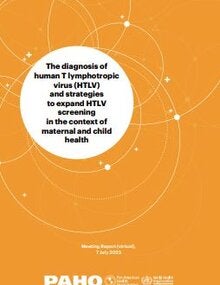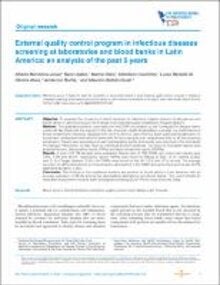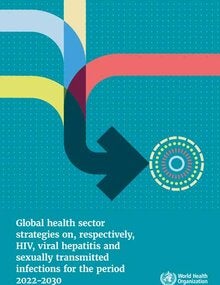SUBMENÚ
Human T lymphotropic virus (HTLV) is a neglected sexually transmitted retrovirus that is distributed globally. Latin America and the Caribbean are considered high prevalence areas. This virus infects the immune system, causing a lifelong infection.
· There are two main types of HTLV, type 1 and 2. HTLV-1 is more prevalent and more commonly associated with disease.
· According to an estimation from 2012, 1 to 2,5 million people are living with HTLV-1, but data were available for only 15 countries in the Pan American region
· Most individuals living with HTLV-1 in the world are still unaware of their infection.
· HTLV-1 disproportionally affects areas with low human development index.
· The coverage of blood donation screening for HTLV-1 is considered high in Latin America.
· In first nation communities from Americas, the prevalence of HTLV-1/2 infection is heterogeneous. Overall, the prevalence within these communities is considered high, and in some communities HTLV type 2 is more common than HTLV-1.
· Women are the most affected by HTLV.
· There is no vaccine nor curative treatment for HTLV infection. However, there are treatment for HTLV-1 associated diseases.
HTLV targets the immune system and causes a life-long infection.
Some individuals have asymptomatic infection. However, HTLV-1 may cause a blood cancer with short survival, called Adult T cell Leukaemia Lymphoma (ATLL). Many inflammatory diseases are also caused by or associated to HTLV-1, including HTLV-1 associated myelopathy, infective dermatitis, uveitis and lung disease. As HTLV-1 infects the immune system, patients living with HTLV-1 may have impaired response to co-infection, particularly to Strongyloids stercoralis and tuberculosis. People living with HTLV-1 has impaired quality of life and increased risk of all-cause mortality.
- Adult T cell leukemia lymphoma (ATLL)
Symptoms varies according to ATLL type (acute, lymphomatous, chronic and smouldering). Acute and lymphomatous types represent most cases and are the most aggressive forms of ATLL. Patients with ATLL may present with lymphadenopathy, hepatosplenomegaly, hypercalcaemia and skin lesions. Lung, bones and other organs may also be affected in patients with ATLL.
- HTLV-1 associated myelopathy
HTLV-1-associated myelopathy (HAM), formerly known as tropical spastic paraparesis (TSP), is a chronic inflammatory disease of the central nervous system. The disease is characterized by progressive spastic weakness of the lower limbs, lower back pain and bladder and bowel dysfunction.
- Infective dermatitis
Infective dermatitis is a cutaneous manifestation of HTLV-1 infection. It is more frequently observed in paediatric patients and lesions are usually seen on the scalp, external ear, retroauricular area, eyelid, paranasal skin, neck, axilla, and groin. Lesions are erythematous, scaly, and crusted and are usually recurrent. Concomitant bacterial infection (Staphylococcus and Streptococcus) is common. Children with infective dermatitis are more likely to develop ATLL and HAM in adulthood.
HTLV is transmitted via a variety of body fluids from infected individuals, such as blood, breast milk, semen and vaginal secretions. Condomless sex is an important transmission route of HTLV. Contact with infected blood and tissues, via blood and organ donation and by sharing needles and sharp objects may result in HTLV transmission. In some countries, blood and organ donors are screened for HTLV. Vertical transmission occurs primarily via breastfeeding.
HTLV is not transmitted through ordinary day-to-day contact (kissing, hugging, shaking hands, or sharing personal objects, food or water).
A blood test is needed to diagnose HTLV infection. Serological tests, such as enzyme immunoassays (EIA) and chemiluminescence will detect the presence or absence of antibodies to HTLV. No single test can provide a definitive HTLV diagnosis. A combination of test is needed. The second test may detect antibodies to different HTLV proteins (for example, Western Blotting and Line Immunoassay) or may detect proviral DNA integrated into the host cell genome (using Polymerase Chain Reaction, PCR). This combined approach is important to confirm HTLV infection and to inform HTLV type.
Whilst HTLV type 1 is the most common and the type that is usually associated with disease, infection by HTLV type 2 is less frequent and it is rarely associated with disease.
Rare cases of HTLV type 1 and type 2 co-infection may occur.
Information is key to prevent HTLV transmission.
A combined approach, including biomedical, structural, and behavioural interventions, is important to successfully prevent HTLV dissemination within communities.
Prevention strategies include reducing risk-taking behaviours, promoting safe sex, and implementing harm reduction programmes for people who inject drugs. HTLV screening of blood and organ donors is important to prevent parenteral transmission. To reduce the risk of vertical transmission some countries recommend shortening or avoidance of breastfeeding for mothers living with HTLV.
There is no curative treatment for HTLV-1/2 infection. There is, however, treatment for HTLV-1 associated diseases. People living with HTLV-1/2 should engage regularly with a multidisciplinary healthcare team.
They must be counselled regarding transmission routes and prevention strategies, receive information on HTLV-1 associated diseases and undergo a detailed clinical evaluation to identify signs and symptoms of HTLV-1 associated diseases. Early diagnosis and treatment are usually associated with better outcome.
The Pan American Health Organization recognise HTLV-1 as a public health problem in the region. PAHO has been engaging with different stakeholders, including HTLV experts, researchers, civil society, healthcare professionals, health managers and policymakers to expand and strengthen the response to HTLV in the region. In collaboration with HTLV Channel, PAHO has organised workshops about HTLV, when priorities were identified.
In consonance with the inclusion of HTLV-1 in the Global Health Sector Strategies on, respectively, HIV, viral hepatitis and sexually transmitted infections for the period 2022-2030 (GHSS), PAHO is mapping current policies and practices implemented in the region and is working with its Member States to increase awareness about HTLV and to advance policies to this neglected virus.











